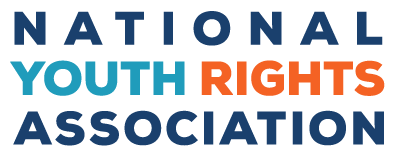 Can’t attend the upcoming rally in Washington, DC against corporal punishment in our schools? You can still share your views.
Can’t attend the upcoming rally in Washington, DC against corporal punishment in our schools? You can still share your views.
During the second day of the event, NYRA Executive Director Bill Bystricky will join other activists in reading comments submitted from across America.
If you have a personal experience with corporal punishment in school, send us a note that can be read in 3 minutes or less.
It can be read anonymously or with your first name and city; just let us know your preference.
You can post your message on this thread, or you can email it to tellit@youthrights.org.






I used to go to a military/Christian school that used corporal punishment for things like homework being late or failing, etc. The funniest part was that the guy that had the paddle was an old guy that looked like a pedophile. If you can’t get rid of corporal punishment, than at least get us some less scary people to administer it. preferably some that don’t look like they enjoy it.
School child abuse. If you find this concept unusual, you’re not alone. Americans generally do not think of child abuse as something that can happen at school. To imagine it being committed by a child’s teacher or principal, as opposed to the child’s parent or another in-home relative, goes against the grain of our standard notions.
Several years ago, I did a Google search on the exact phrase “school child abuse.” This search yielded a mere 487 results–and of those, it seemed that about 90% contained only punctuated variants such as “the school’s child abuse center” or “teen pregnancy, teen suicide, dropping out of school, child abuse or neglect, domestic violence, etc.” Many of these articles indicated the vigilant role that schools are supposed to play in detecting and preventing child abuse. Hardly any reflected awareness that many educators–for all the nobility of their profession–have themselves engaged in child abuse or that vigilance on children’s behalf is also called for within their own ranks.
Among the first 100 results, there were a few exceptions to this tendency. Nearly all, however, were related to one of three things: a) the recent exposure of widespread abuse in a Hare Krishna school–which most people would consider a cult and hardly typical b) the abuse of indigenous children in a particular Catholic-run Canadian school, or c) sexual abuse exclusively. Even though one finds upon repeating the experiment in 2011 that the number of Google results for “school child abuse” has increased to about 223,000, the leading results suggest that a disconnect between school settings and physical child abuse persists in the public mind.
It’s not as though school child abuse is an entirely unfamiliar notion to Americans. It was, for example, an important theme in the 1982 cult classic film Pink Floyd – The Wall, as well as a feature of the childhood recalled in Frank McCourt’s best-selling memoir Angela’s Ashes (1996). It is possible, however, that audiences largely supposed that physical cruelty endured by schoolchildren at the hands of their teachers was something from a bygone era–and perhaps, as well, a “British thing” (or Irish, in McCourt’s case) uncharacteristic of the U.S. school system.
The reality is that while the U.K. abolished school corporal punishment a quarter-century ago, twenty American states continue to sanction the practice of hitting students forcefully with solid wood paddles. (Some may recall that just before winning an Oscar last year for “The King’s Speech,” actor Colin Firth related experiences from his youth of getting beaten at school in his native England and in the state of Missouri with a cane and paddle, respectively.) Although many might take issue with the word “cruelty” being used in this context, the deep bruises and broken skin that paddling has been known to produce on children’s bodies indicate a pain intensity that is not so easily dismissed.
There is a remarkable double standard afoot here. Parents who leave marks like this on their kids are apt to be investigated for, if not quickly charged with, criminal child abuse. Teachers and principals, on the other hand, can treat kids this way with impunity, thanks to special laws that shield them and the seemingly absolute reluctance on the part of local prosecutors and judges to let any incident of school paddling, no matter how severe, be tried in a courtroom. The state agencies charged with protecting children from brutality, furthermore, are generally prohibited from getting involved when the brutality happens to take place on school property. (Families who take legal action over paddling may also face considerable backlash from their community, especially if the paddler in question is a beloved teacher or coach–and sometimes even if the paddling was not sanctioned by school policy.)
Are most Americans OK with schoolchildren being beaten with paddles? The fact is that most don’t even realize that school corporal punishment is still legal, let alone taken to such extremes. Even in states with the highest rates of paddling, such as Texas, the majority of citizens seem to be unaware it’s going on. One reason for this blind spot is that the media have, for the most part, been averse to reporting substantially on this controversial, emotionally charged, semi-taboo subject. Consider, for instance, that in four decades of broadcasting, 60 Minutes has never done a segment about it, and until this spring, neither had NPR’s All Things Considered. When a Tennessee group in 2009 filed a federal complaint against 70 school districts across the state over their paddling policies, only a single local public radio station found the complaint newsworthy. And when a federal appeals court approved a San Antonio school’s decision to forcibly hold down and paddle an 18 year old student–a legal adult, mind you–citing the state’s “need to maintain a safe and secure educational atmosphere,” it hardly produced a ripple in the press (ref: Serafin v. School of Excellence in Education, 2007). At the same time, only a few leading advocacy groups have taken interest in the issue, despite the many objections to paddling that can be made not only in the interest of safety, best educational practices, and simple decency, but also on grounds of civil rights and human rights* (and in the case of female students being spanked by male teachers, arguably, women’s rights as well).
On a side note, there is a parallel between school paddling and the airport security pat-downs which have lately caused public outcry. In both cases, you have government employees performing an act that normally would be considered sexual assault or battery (as remarked by the man whose videotaped confrontation with TSA screeners made him a YouTube sensation). Both are supposedly justified, one in the interest of security and the other in the interest of discipline. To all those indignant airline passengers, many a Texas high school student could say, “Welcome to my world!”
Those who don’t want children and teens to be fair game for brutality in any environment must work to increase public awareness of school corporal punishment, as well as of the legal protections that often keep teachers and principals from being held accountable when they cross the line. It cannot be denied that immunity from civil or criminal prosecution makes schoolchildren easier to abuse or exploit. Deferring to local school districts in determining teachers’ criminal liability (e.g., Alabama) also invites a marked inconsistency of child protection standards within the state. (Granting such immunity to school personnel while not to parents themselves, moreover, writes into law a double standard by which parents have less discretion than teachers when it comes to the discipline of their child.) The laws by which teachers are mandated reporters of suspected child abuse must also be amplified to serve as a check not only on the physical punishment children may receive from parents, but also on that which a teacher’s own colleagues and others in loco parentis may inflict.
To quote North Carolina activist Peggy Dean: “Child abuse is not defined by the room in which it occurs. It should not matter whether it happens in a principal’s office or a living room.” With this in mind, let us resolve to include *school* child abuse in the conversations we have about the problem of violence against children, as well as in our search for solutions.
* See the joint report by Human Rights Watch and the American Civil Liberties Union, A Violent Education:
Corporal Punishment of Children in US Public Schools (2008), which can be read at http://www.hrw.org/en/node/62078